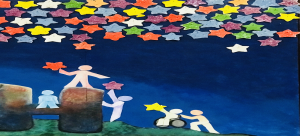A phrase that comes to mind when I think of our world is “melting pot.” Just as multicolored tomatoes add variety to our vegetable gardens, the assortment of people in the world adds color, warmth, and substance to our communities. A natural outcome of the variation in our characteristics is the distinctness in our perspectives on diversity. However, the only one that is necessary recognizes the contrasts we see in others as the uniqueness we observe when we look at ourselves. The billions of people living in our world means that who we are, what we do, how we learn, and what we say will differ. Yet, we all belong and have the right to access whatever opportunities we choose to pursue.
In 2017, Harris et al. wrote about Reggie, a high school graduate who owns his construction company. His parents moved from Mexico to the United States two years before his birth. He spoke Spanish and English and was strong in math. Reggie required support with reading and engaged in some behaviors that, according to his 3rd-grade teacher, were inappropriate. Based on his teacher’s recommendation, professionals at Reggie’s school conducted a special education evaluation and he qualified for services. During his senior year in high school, Reggie visited his elementary and middle school teachers. While on his visit, he told his 3rd-grade teacher, “I just wanted you to know that I am graduating from high school this year. You said that I would never amount to anything, and that I had LD [learning disability]” (Harris et al., 2017, p. 7). [1]
How can we foster authentic generativity in the diversity of the individuals who color our communities, like Reggie and Amanda Gorman, so they surpass expectations and imprint their mark on the world? In what ways can we shape our interactions to help them exceed their perceived potential? How can we free them to explore their lives and become included and contributing members of society, to the greatest extent possible?

When tasked with doing something we must know what it means, so adding good to the lives of diverse people through generativity in diversity requires us to conceptualize its meaning. My definition of generativity in diversity, which follows, hinges on the same belief in people and care of others I wrote about in Be Your Best: 4 Principles for Becoming Better Every Single Time.
Generativity in diversity is believing in, caring for, and including others regardless of their characteristics; helping them discover who they are and their capabilities; creating in them a drive for purposeful behaviors that give them a sense of fulfillment; building their independence, novelty, and creativity; empowering them to accomplish whatever they choose; and motivating them to engage in behaviors that promote becoming Better Every Single Time (BEST).
What will you say is your definition of generativity in diversity? Regardless of what you decide, generativity in diversity requires its proponents to highlight strengths, divert attention from negative occurrences to positive realities and possibilities, and promote the resiliency in our diversity. In G-Dog and the Homeboys, Celeste Fremon (2008) [2] explained that through resiliency, we add good to people’s lives. Fremon wrote about Father Greg Boyle, who helped gang boys uncover their truths, overcome obstacles, and develop resiliency. The diverse individuals in our communities need the same opportunities Father Boyle gave to the boys he served. They need support, care, and commitment to be their BEST and experience the generativity of their diversity.

Clint Eastwood’s 2009 portrayal of Walt Kowalski in Gran Torino provides an on-screen depiction of one form of generativity in diversity. A widower and Korean War veteran, Kowalski struggled to overcome his prejudices. When his young Hmong neighbor, Thao, tried to steal his prized possession—his 1972 Gran Torino—his life changed. He saw the good in Thao and when he learned Thao’s truths, he realized he and Thao were the same. They were two people living in the same neighborhood with the right to co-exist. When we focus on what makes us the same, like Kowalski, we can discover ways to foster generativity in the diversity that surrounds us.
Thich Nhat Hanh once said, “We have more possibilities available in each moment than we realize,” [3] and according to Aristotle, “One may see in the course of travel how close of kin and how friendly man is to man.” [4] To develop generativity in diversity, we must change our attitudes and norms to find and maximize the possibilities that surround us and learn that although we are different beings, at our core, we are the same creatures. The most important requirement for generativity in diversity, is our ability to become transparent for equity and equality regardless of ability, race, gender, ethnicity, nationality, language, culture, religion, or any other aspect of our diverse lives. We must examine our own experiences, ideas, and beliefs to determine whether we encourage or discourage bias, stereotypes, discrimination, and microaggressions. Ending the silence that perpetuates social injustice holds the power we need to add good to the lives of the diverse people (i.e., everyone, including me and you) who live in our communities.

My story is incomplete without my voice and the same is true for yours. Only you can fulfill your role in advocating for social justice, inclusion, intersectionality, and generativity in diversity. Together, we can use our voices and stories for the greater good, by fulfilling our social responsibility to recognize and accept our differences, including those that are invisible and inward. Searching deeper than the tip of the iceberg is imperative because 90% of who we are lies below our surface and beyond what the eye sees. Uncovering those features is the key to fostering generativity in diversity.
References
[1] Harris, M. K., Obiakor, F. E., Rotatori, A., & Graves, J. (2017). Shifting leadership paradigms for all students in general and special education. In F. E. Obiakor, T. Banks, A. F. Rotatori, & C. Utley (Eds.), Leadership matters in the education of students with special needs in the 21st century, pp. 1-13. Information Age Publishing.
[2] Fremon, C. (2008). G-Dog and the homeboys (Updated and expanded ed.). University of New Mexico.
[3] BrainyQuote. (n.d.). Thich Nhat Hanh quotes. https://www.brainyquote.com/quotes/thich_nhat_hanh_531565
[4] Aristotle. (1910). Nichomachean ethics. George Routledge. https://archive.org/details/nicomacheaneth00arisiala/page/216/mode/2up

